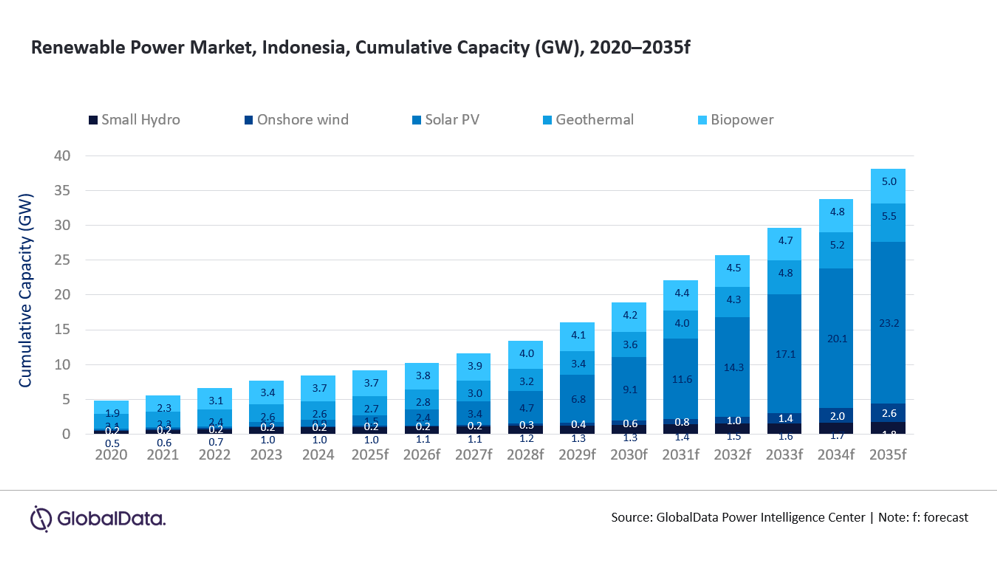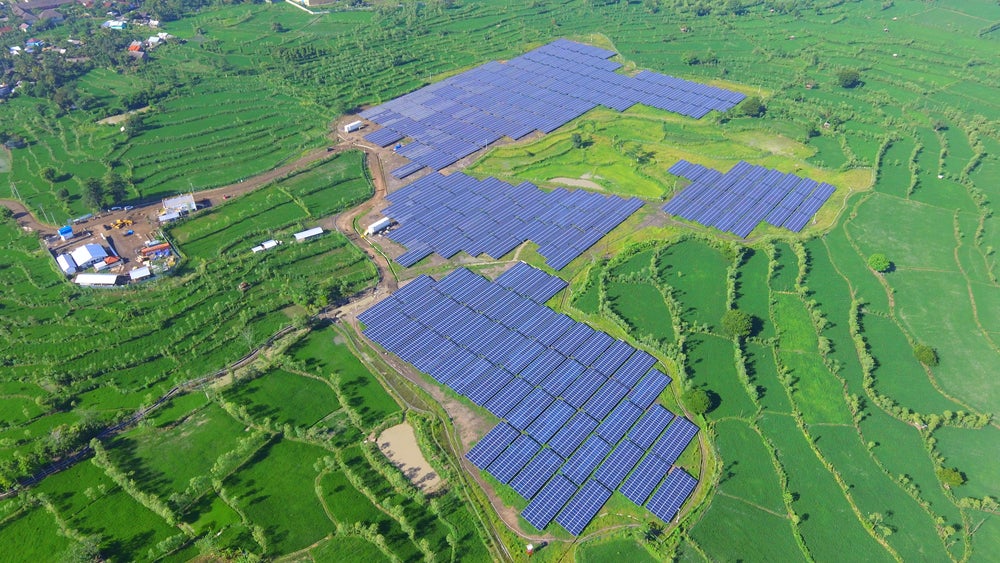GlobalData’s latest report, Indonesia Power Market Trends and Analysis by Capacity, Generation, Transmission, Distribution, Regulations, Key Players and Forecast to 2035, provides in-depth insights into the country’s evolving power landscape. The study analyses installed capacity (in gigawatts, GW), generation (in terawatt hours, TWh), technology mix and regulatory frameworks across the historical period 2020 to 2024 and the forecast period 2025 to 2035. It also evaluates market trends, investment opportunities and key company strategies. The analysis draws upon GlobalData’s proprietary databases, primary and secondary research, and expert modelling.
Indonesia is advancing its clean energy transition while maintaining a strong reliance on thermal generation, supported by major investments in solar photovoltaic (PV), onshore wind and geothermal energy. The country’s cumulative renewable power capacity is forecast to reach 38.1GW by 2035, up from 8.4GW in 2024, registering a compound annual growth rate (CAGR) of 14.7% between 2024 and 2035.

Access deeper industry intelligence
Experience unmatched clarity with a single platform that combines unique data, AI, and human expertise.

Solar PV capacity is expected to surge from 0.9GW in 2024 to 23.2GW in 2035, driven by the expansion of floating and utility-scale projects and rooftop solar programmes under updated feed-in and net-metering mechanisms. Onshore wind capacity will rise from 0.15GW to 2.6GW, supported by competitive tenders and hybrid renewable developments in Sulawesi and East Nusa Tenggara. Geothermal capacity will expand steadily from 2.6GW to 5.5GW, leveraging Indonesia’s vast geothermal reserves and fiscal support through the PT SMI Geothermal Fund. Supportive frameworks such as the Just Energy Transition Partnership (JETP), targeting 44% renewable electricity by 2030, and the RUPTL 2025–2034 plan are accelerating the clean energy shift. Presidential Regulation 112/2022 has further strengthened investment clarity by limiting new coal development and mandating early retirement pathways for existing plants. Additionally, cross-island transmission expansion and the deployment of digital grid systems are enhancing integration and reliability.
Despite robust renewable growth, Indonesia’s power mix will remain dominated by thermal sources in 2035. This reflects the country’s vast domestic coal reserves, low generation costs and the critical role of natural gas in balancing intermittent renewables and supporting baseload reliability. Coal-fired capacity is projected to rise from 55.6GW in 2024 to 61.4GW in 2035, while gas-fired capacity will expand from 29.1GW to 36GW. For a geographically dispersed archipelago, maintaining thermal stability ensures consistent supply across isolated island grids while renewable infrastructure continues to scale up.
Indonesia’s power system is entering a dual-track phase of expansion, scaling renewables while retaining thermal stability. With solar PV and wind onshore leading growth, supported by geothermal development and grid modernisation, the country is progressively building a more diversified and secure energy mix through to 2035 and beyond.

US Tariffs are shifting - will you react or anticipate?
Don’t let policy changes catch you off guard. Stay proactive with real-time data and expert analysis.
By GlobalData


